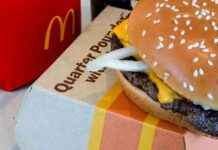Three last-minute but minor anomalies conspired to delay SpaceX’s historic two-part mission this weekend, but not enough to prevent its resounding success.
At 6:38 a.m. Pacific time Sunday, the Falcon 9’s nine Merlin engines — each one taller than a human — lifted 5,500 pounds of NASA research and supplies from Kennedy Space Center in Florida into the gravity-laden atmosphere without a hitch.
The International Space Station can now expect a delivery of supplies and research materials early Wednesday morning.
And SpaceX can rightly claim its place in history as the first commercial rocket maker to blast off from iconic Launch Complex 39-A, home of the Apollo and space shuttle missions.
“Its been a super exciting day,” said Jessica Jensen SpaceX’s Dragon program manager. “It’s really awesome to see 39-A roar back to life for the first time since the shuttle era. I feel great. It’s been fantastic.”
Once the Dragon orbital spacecraft is unloaded, it will park at the space station for several weeks before returning to Earth on March 19, officials said.
This is the 30th trip for a Falcon 9 rocket, conceived and manufactured at Space Exploration Technologies Corp.’s Hawthorne headquarters. It’s the 10th SpaceX mission contracted by NASA.
The Falcon 9 was set to blast off Saturday morning but was scrubbed 13 seconds before go-time by CEO Elon Musk after a small helium leak was detected and unusual readings were reported in two parts of the engine.
“System was green for launch, I called it off,” Musk wrote on his Twitter page, where he communicates with the public on a daily basis.
The company has proven, against stiff odds, that it can launch rocket deliveries into low-Earth orbit at a fraction of the cost of longtime government contractors Lockheed Martin and Boeing Co. But it lacks the stellar safety record those companies have in their United Launch Alliance partnership. Falcon 9 explosions in 2015 and 2016 damaged SpaceX’s financial stability and credibility.
Now that NASA and SpaceX are locked in a battle to send the first crewed mission into orbit next year on a heavy-lift rocket capable of landing on Mars, safety is more important than ever.
So, even with intense media coverage, the Saturday launch was delayed a day because of minor anomalies that could have been overlooked.
“While the behavior was within our allowables, it was something we hadn’t really seen before so, out of an abundance of caution, we called the (vector controller) actuator suspect,” Jensen said.
With a 24-hour window for launch still open, SpaceX took the Falcon 9, carrying a Dragon spacecraft full of supplies at its nose, down from the launchpad and laid it horizontally Saturday night, Jensen said.
“We had to have technicians go in there and replace it,” she said. “Everything looked as expected.”
Mission, Part Two
A secondary mission — perhaps even more meaningful to the future of space exploration — also went off without a hitch Sunday morning. SpaceX landed the first stage of the rocket safely on its Landing Zone 1 at Cape Canaveral nine minutes after liftoff.
This is the eighth successful booster recovery for the company, which is the first private rocket maker to ever reclaim launched space equipment for reuse. The seventh was in the Pacific Ocean off San Diego in January, but the prior six recoveries took place on the East Coast.
Recycling rockets is key to Musk’s vision of expanding access to the solar system. His goal, since founding SpaceX 14 years ago, is to colonize Mars and beyond.
Musk’s passionate quest has kept NASA on its toes for years as its legacy contractors struggle to compete with SpaceX’s low launch costs. The Hawthorne company makes all its parts in-house, many of them using 3D printers, and charges roughly $60 million per launch.
Musk believes that combining a streamlined manufacturing process with recycled delivery equipment will revolutionize space access by making it much more affordable to get there. His success has motivated a cadre of commercial rocket makers, working quickly to commercialize low-Earth orbit, and opened up a new frontier of scientific investigations.
Exploring Mars and beyond
Lockheed Martin and Boeing Co. not only have decades more experience launching crews into space, they’ve had a sparkling safety record in recent years.
And they continually challenge SpaceX’s reliability, particularly since a Sept. 1 explosion destroyed a rocket, its $195 million payload, and much of its Cape Canaveral launchpad during a test launch.
Last week, NASA officials announced that they hope to move up the first crewed, heavy-lift commercial mission to 2018. SpaceX now is accelerating its work to launch a crew on the in-development Falcon Heavy next year as well.
“Provided Dragon 2 demo missions go well, SpaceX is highly confident of being able to fly U.S. astronauts in 2018,” Musk wrote Saturday on his Twitter page. “We have already retired so much R&D risk on Dragon 2 that I feel very confident of 2018.”
NASA’s Space Launch System rocket and Orion spacecraft is projected to cost $18 billion.
On Sunday, Jensen said SpaceX’s immediate focus now is on bringing its other Cape Canaveral launchpad into working order. Launch Complex 40 was badly damaged in the September explosion.
“The goal is to have 40 up and running sometime this year,” Jensen said. “We’re shifting our commercial missions to 40.”
Its Launch Complex 39-A at Kennedy Space Center already is prepared to host the Falcon Heavy, able to lift 54 metric tons with the help of three rocket boosters rather than Falcon 9’s single one.
“(39-A) is configured for the Heavy,” she said. “We have done minor work at 40. We still have to do the majority of work.”
SpaceX, which plans to launch twice monthly through the end of the year, is scheduled next month to send the SES 10 communications satellite into space on a recovered booster. It will be the first time the company has attempted to reuse a first-stage Falcon 9.
Our editors found this article on this site using Google and regenerated it for our readers.







